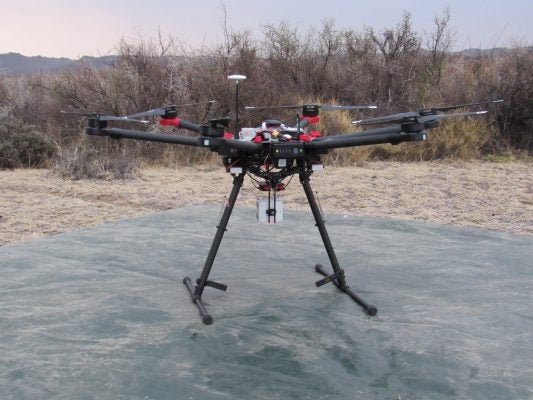What do animal conservation and astrophysics have in common? On the surface, not much. The disciples of the former work to protect endangered species and keep them alive and well on this planet, while the scholars of the latter peer into the night sky, tracing celestial bodies flickering in remote galaxies, distant and likely devoid of life. But when you put the two together, amazing things can happen.
When conservationists and astrophysicists at the Liverpool John Moores University (LJMU) teamed up, they developed a unique software that can detect, classify, and track the movement of rare and endangered species, and soon will learn to spot their poachers as well. This technology comes especially timely now that the decimated population of the northern white rhinos has just lost its last male.

Serge Wich, a professor at LJMU’s School of Natural Sciences and Psychology, has been using drones to monitor and collect data about endangered wildlife since 2011. The drones, dubbed by some as Eyes on the Sky, are seen by many as wildlife crime prevention technology that would help protect endangered animals from poachers who killed them for tusks and horns.
Flying cameras over hard to reach areas to learn about rhinos, monkeys, and rare birds was much easier than tracking them on foot. But analyzing the footage, often obscured by foliage, required a lot of human involvement—hours of peering at the screen. It was difficult and time consuming—until serendipity interfered.
One day Wich was talking to his next-door neighbor, astrophysicist Steven Longmore, working at the same university. “We were talking about thermal imaging data I was collecting and that it was so difficult for me to analyze the data, and I was doing everything manually,” Wich recalls the conversation the two scientists had over their yard fence. “And he said that in astrophysics they’ve been looking at stars and galaxies and the thermal signatures of those for many decades, and he may be able to help by applying those techniques to the thermal image of animals we were getting.”
Rhinos in regular and infrared light. (Endangered Wildlife Trust/LJMU)
It turns out that animals and humans “glow” in the footage taken by infrared cameras, the same way as stars and galaxies do in space. “With thermal infrared cameras, we can easily see animals as a result of their body heat, day or night, and even when they are camouflaged in their natural environment,” says Claire Burke, LJMU’s astrophysicist working on the project. It also helps that different body parts have different temperatures and therefore glow with different intensity. “I can tell you that the brightest part of the rhino’s body is its bum.”
The team first took a lot of pictures of animals at zoos and safaris and trained the software to recognize the images in the footage taken by drones. Recognizing poachers would also be possible—humans have a very different shape than most animals. “We can pretend to be poachers, take pictures of ourselves and train the software to recognize humans,” Burke says.
Once this work is finished, the surreptitious figures of poachers approaching the herds will glow on the screens as bright night stars, letting the software alert park rangers to head directly to the spot.

Right now, the footage filmed by drones is mainly analyzed by humans or by the AI in development. But Wich hopes that the next generation of drones will be equipped with their own “brains,” such as a credit card sized Raspberry Pi computer with enough power to examine the images in flight. Processing thermal images in real time would allow drones to almost instantly alert park rangers of approaching poachers.
Weekly Digest
Wich thinks that eliminating poaching completely would take a global mind shift, including strictly enforced import bans of rhino horns, ivory, bush meat and other items, but in the meantime drones can be a strong discouraging force. “It won’t be a silver bullet,” he says, but “once people know that drones are up in the air and finding them rapidly, it might function as a deterrence.”
Astro-ecology AI’s was first put to the test in South Africa last September to spot Riverine rabbits, one of the rarest and most endangered mammals in the world. More field tests are coming up—orangutans in Malaysia, spider monkeys in Mexico, and river dolphins in Brazil.









